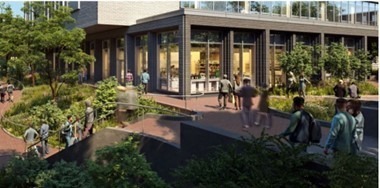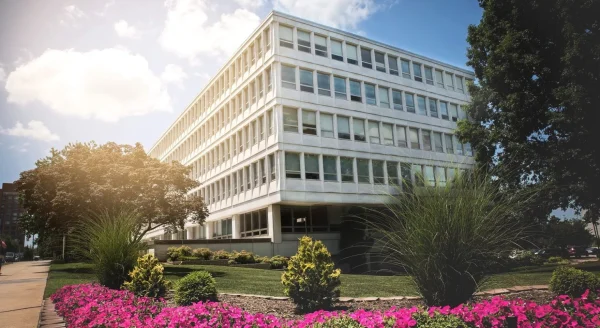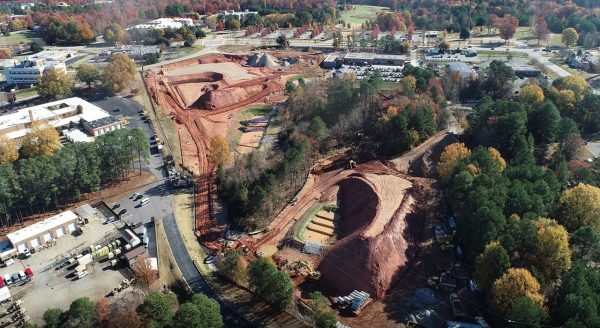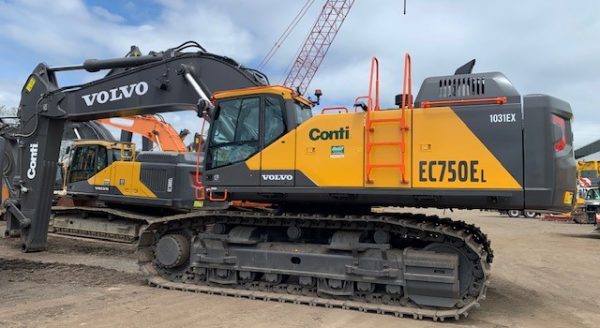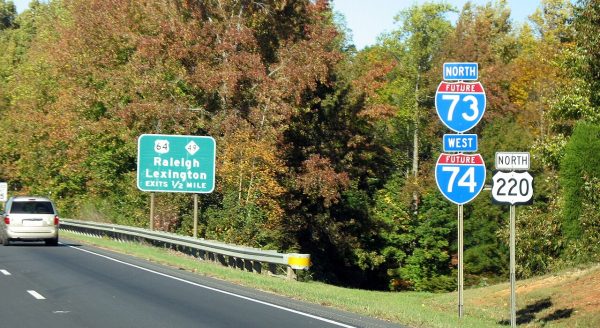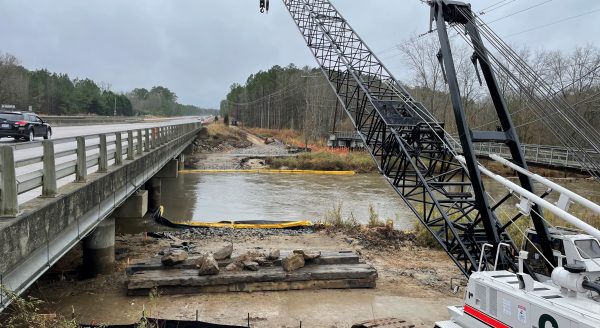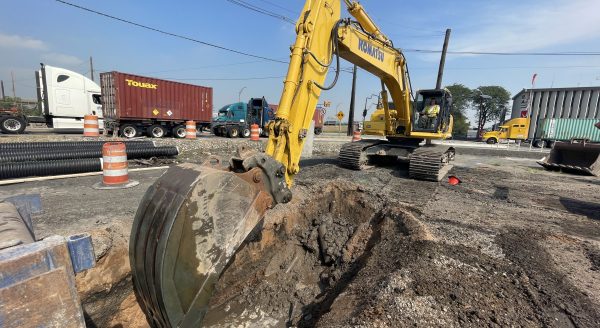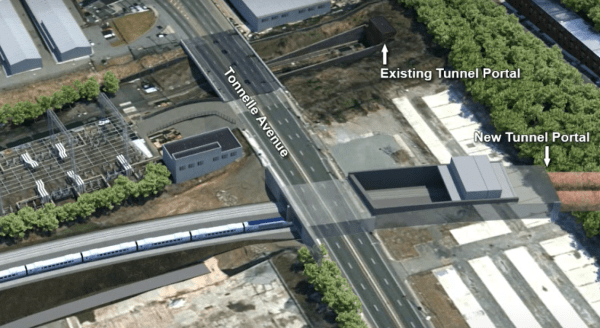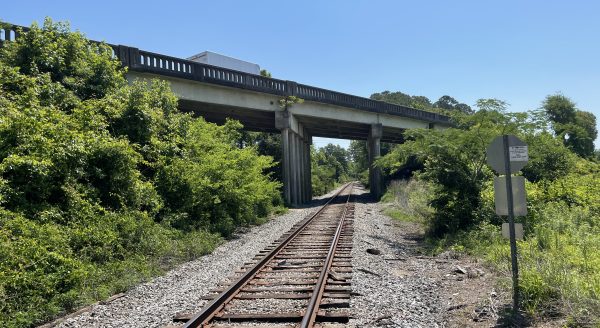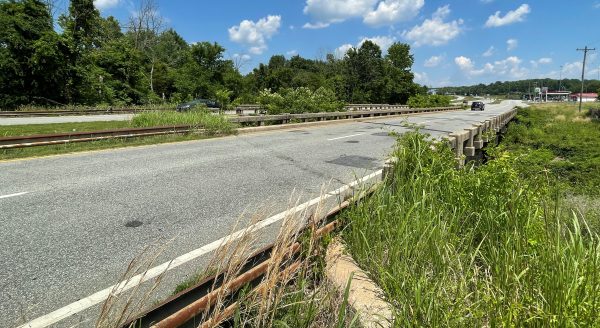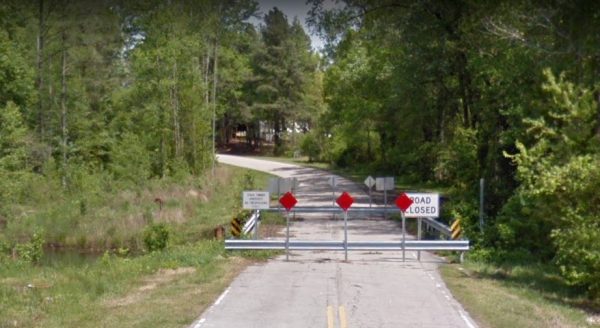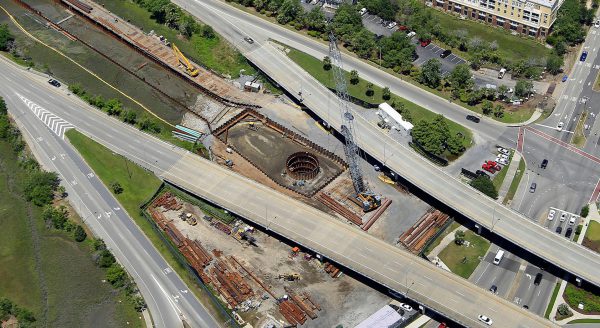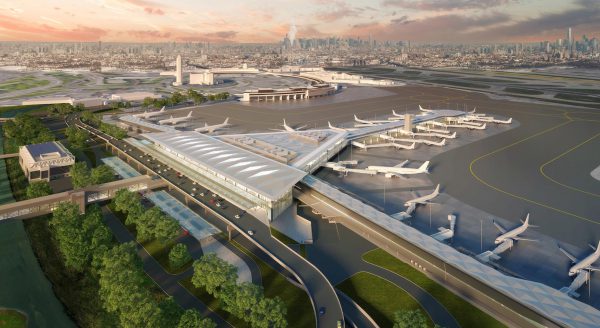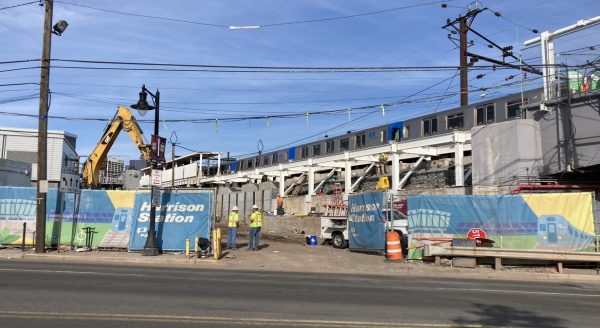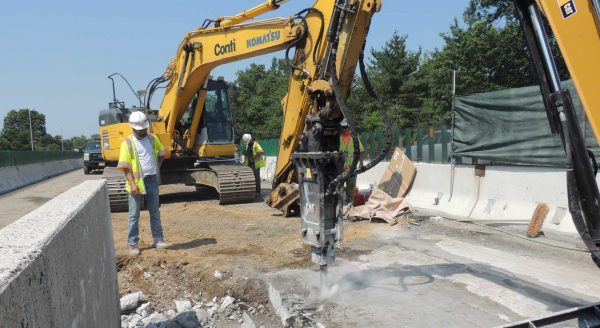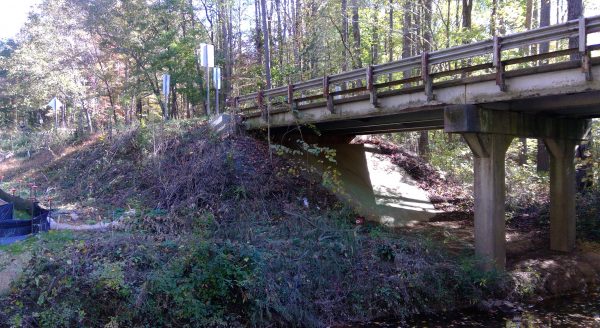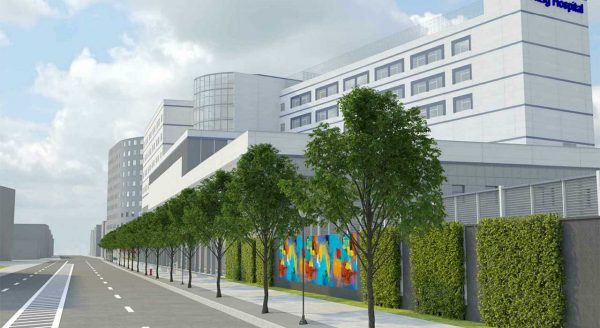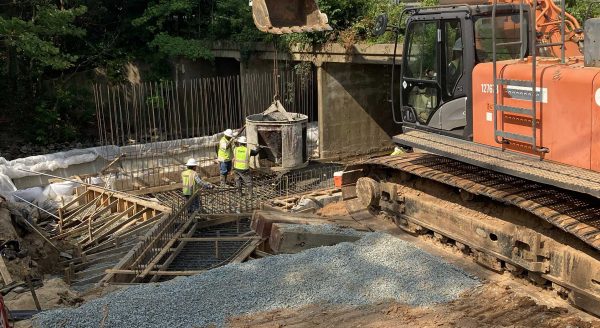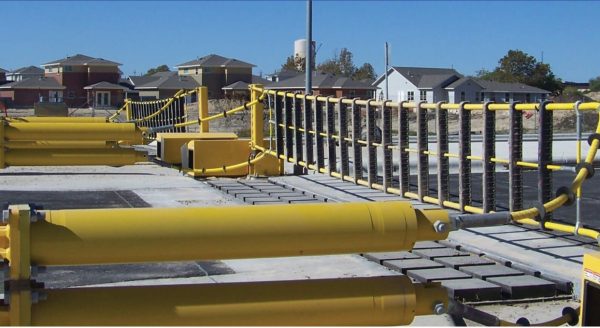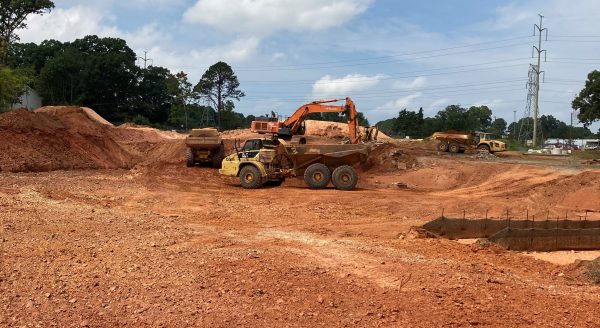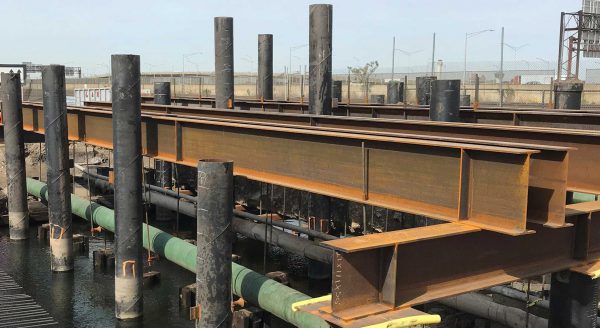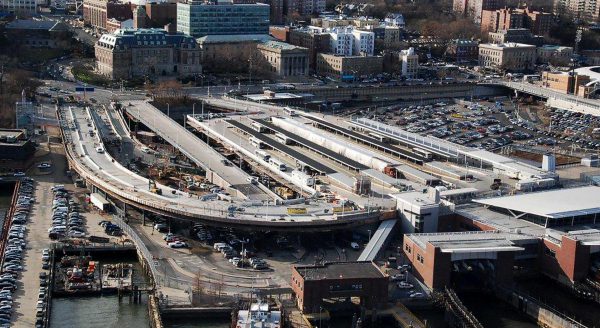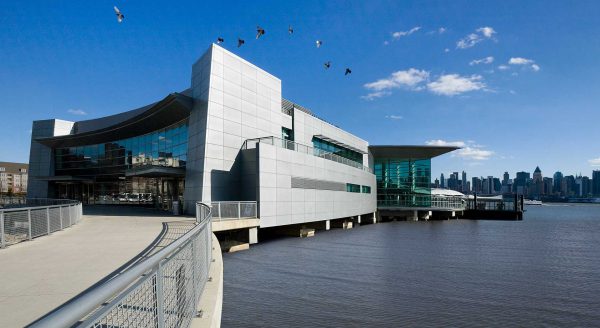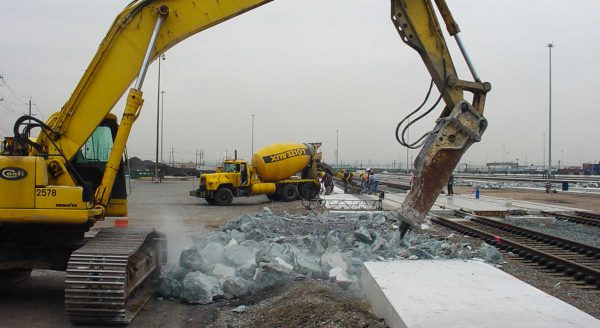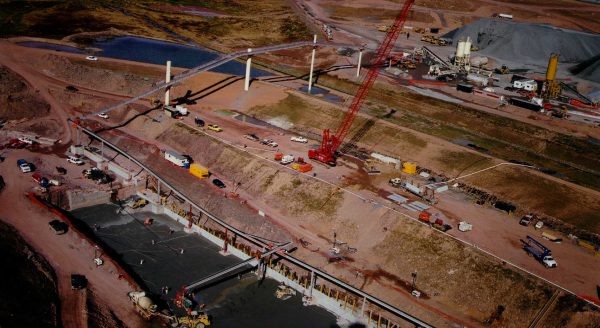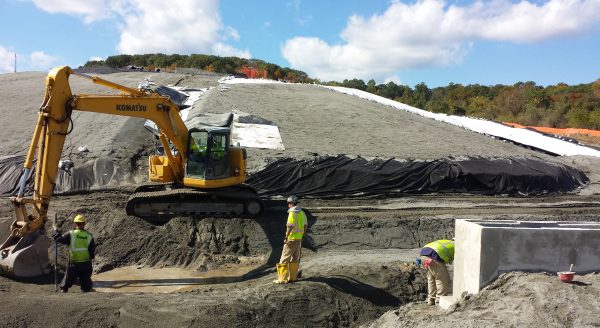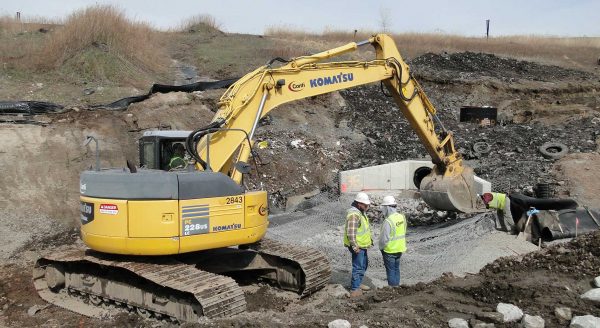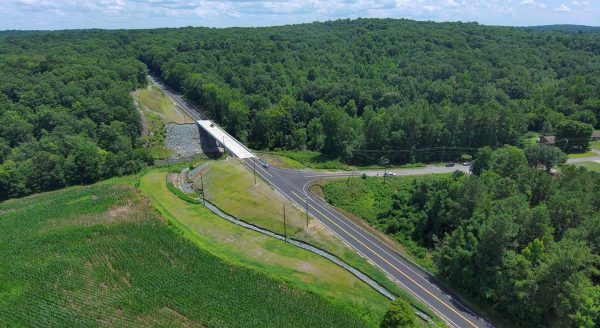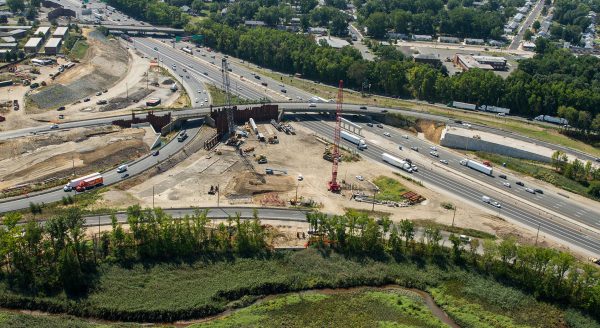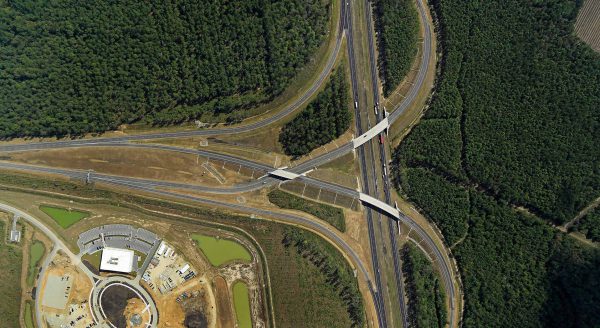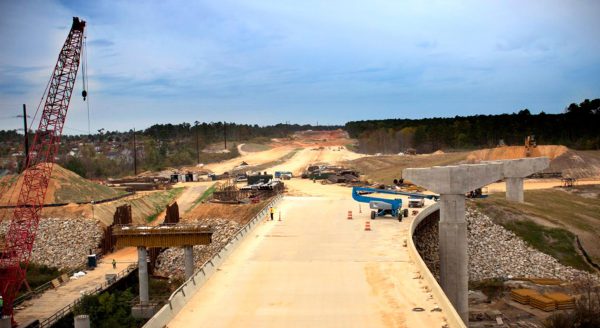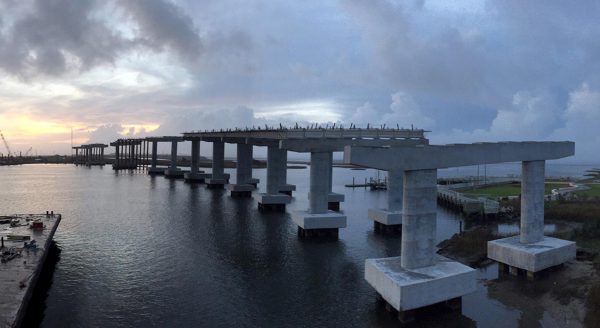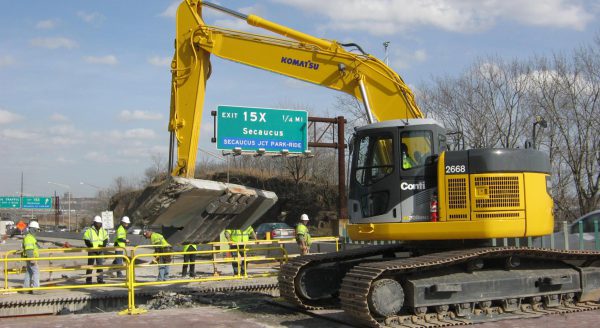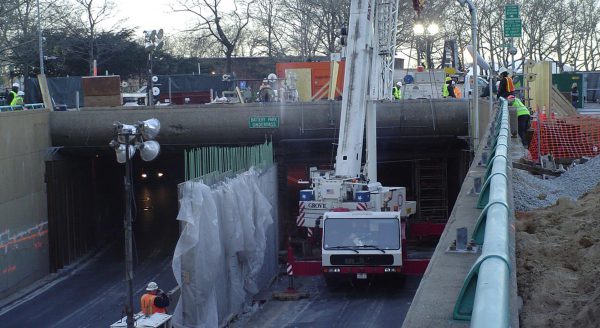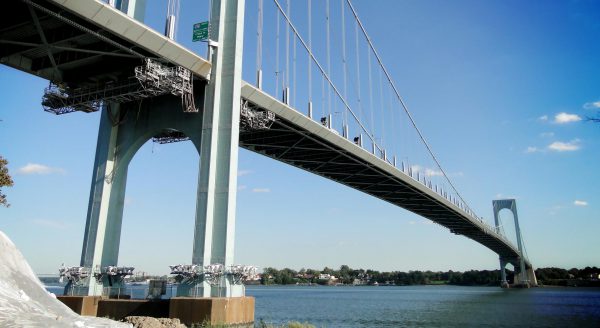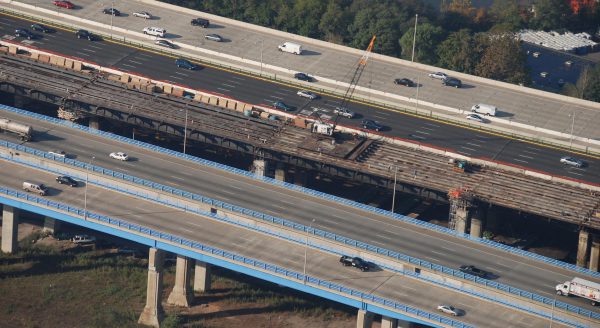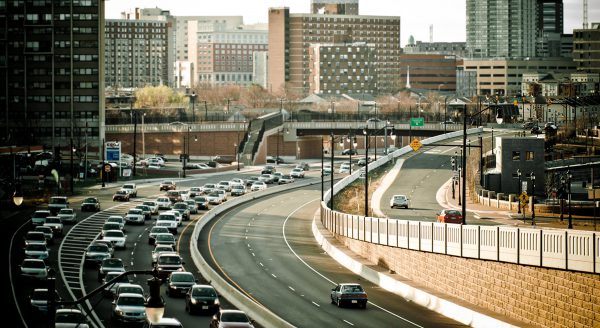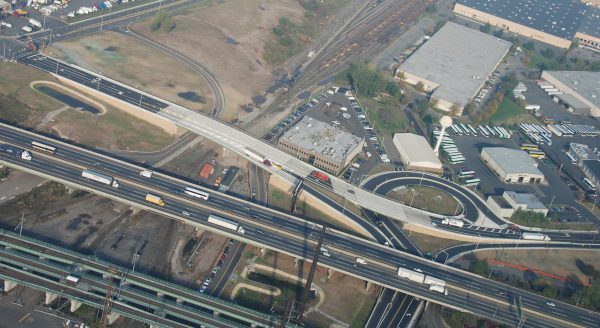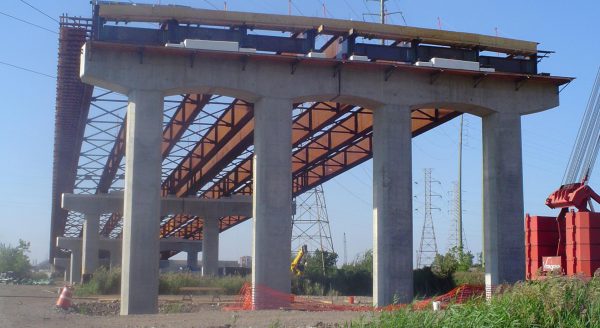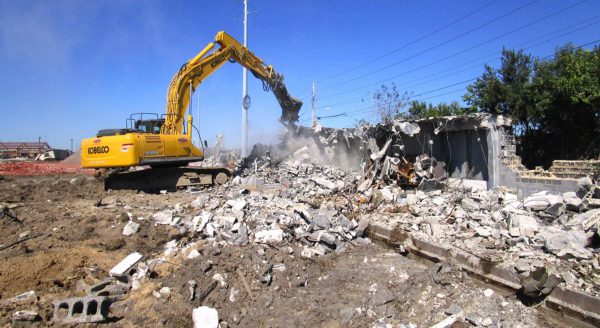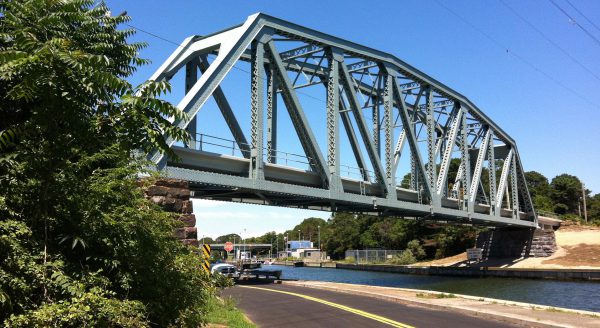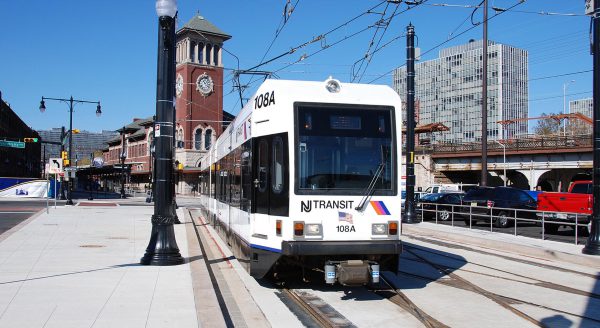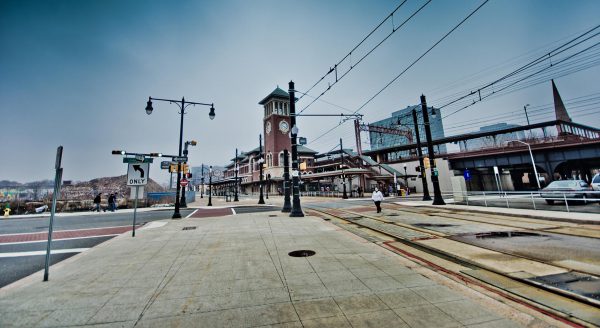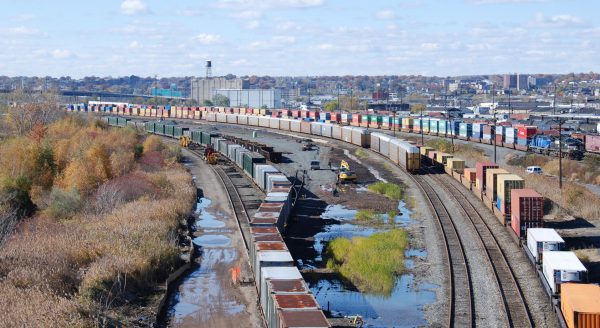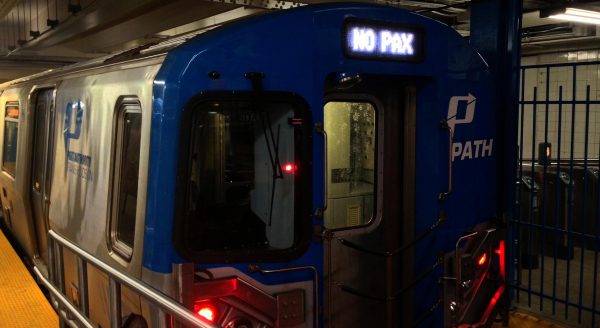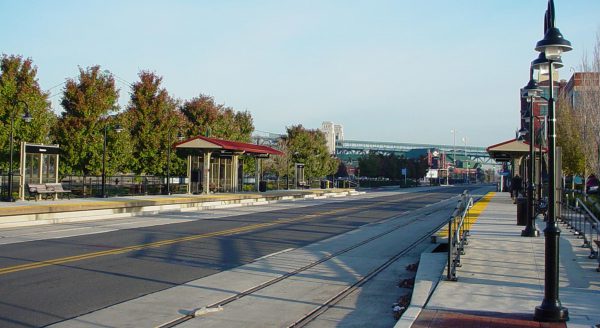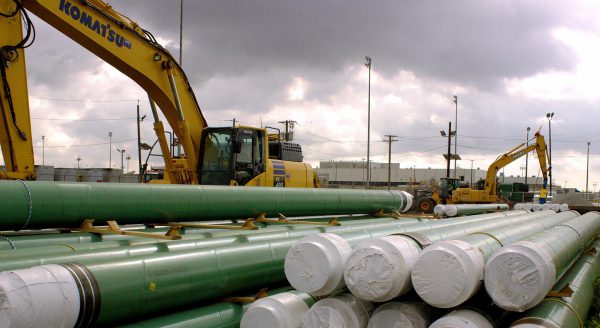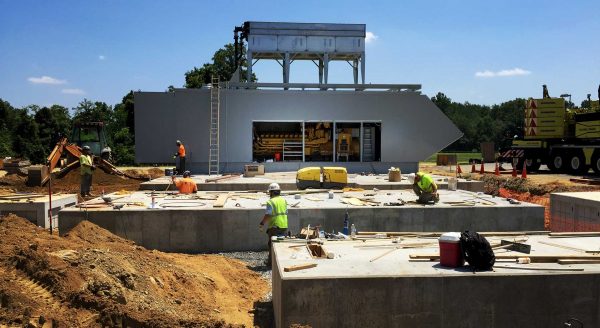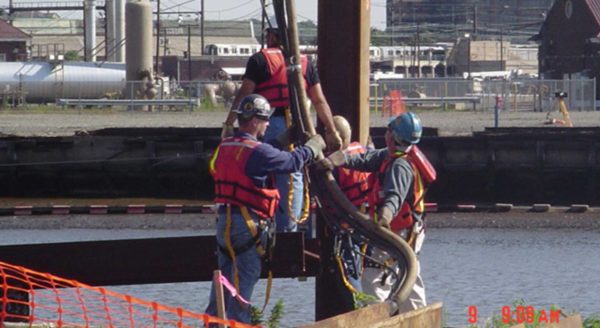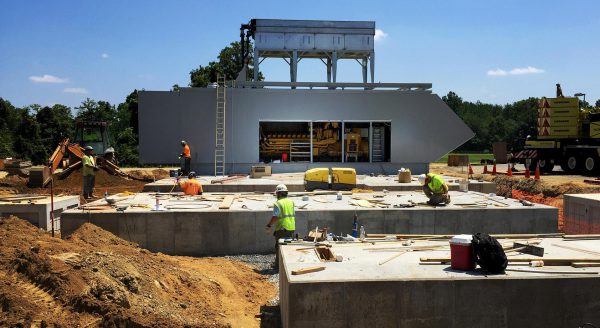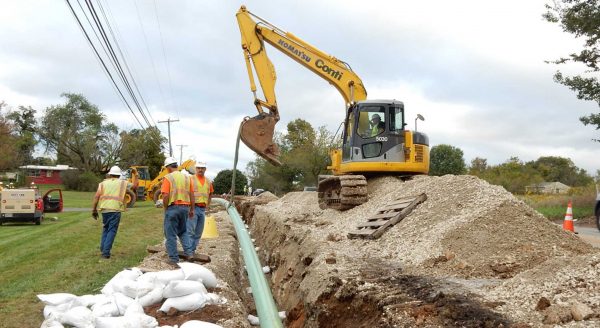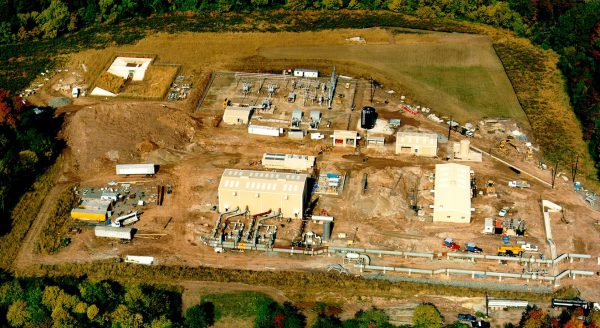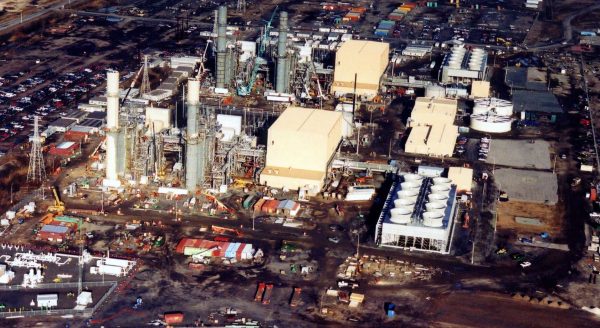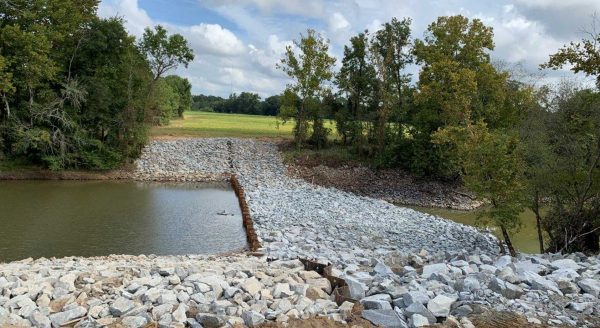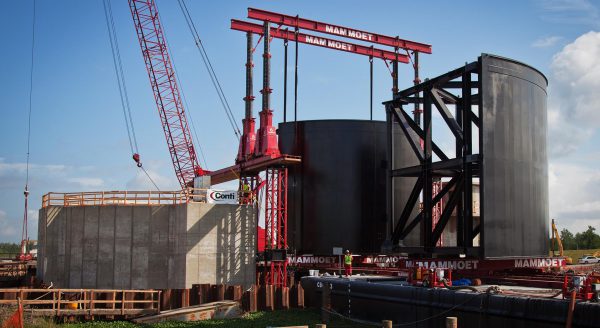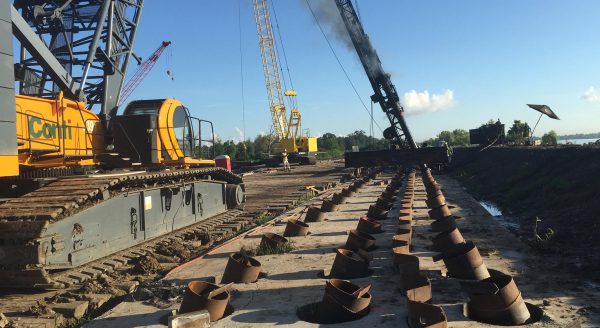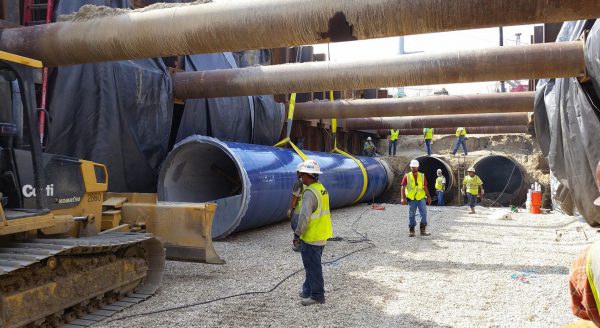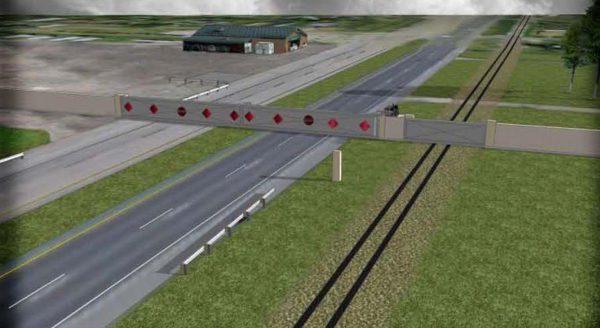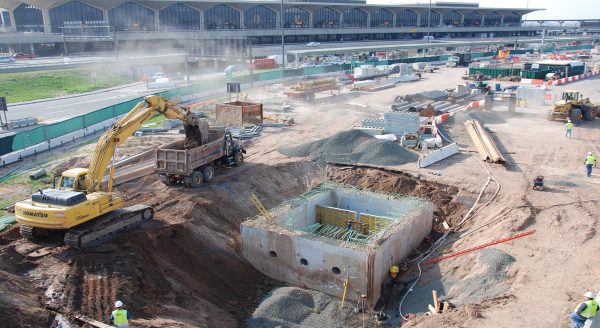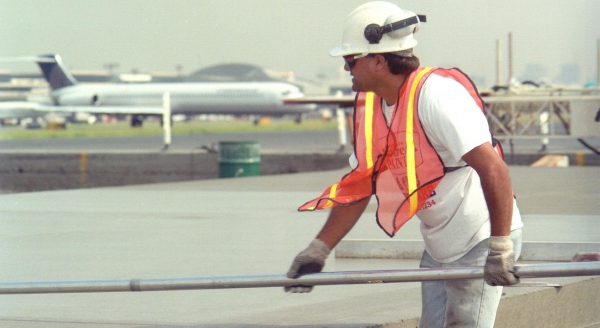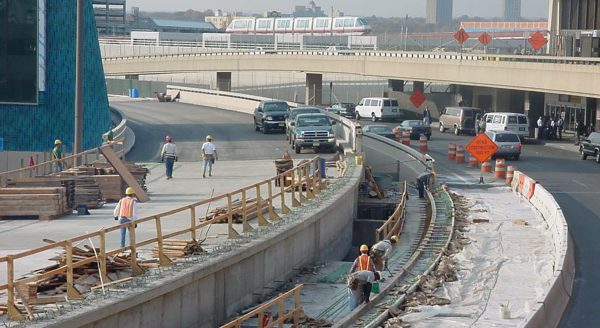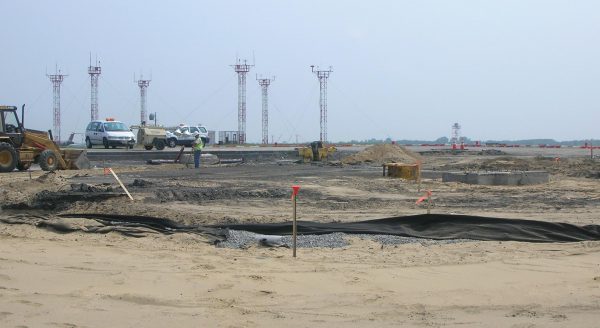North Carolina State University Integrative Science Building
Conti is performing construction of the associated site and utility infrastructure to serve the new building. Conti is performing all of the excavation, support of existing structures, and backfilling of the new building foundations, as well as relocating the existing utilities around the site.
Brooks Global Studies Elementary Site & Utilities Package
The project consists of a cut-to-fill operation with site excavation and grading to a subgrade of 23,000 cy. Conti will perform grading for the building pad, roadway, sidewalks, playground, and grass area.
North Carolina Education Campus
This project will provide site work and utilities for the new campus where the UNC System, the Community Colleges System, the Department of Public Instruction, and the Department of Commerce will be located.
DHHS Campus Phase 1 – Site Work & Utilities
This project will develop a new campus for the North Carolina Department of Health and Human Services with the relocation of DHHS functions currently located at Dorothea Dix Park in Raleigh, North Carolina.
NCDOT US17 Hampstead Bypass
Conti is constructing a four-lane, divided highway on a new location, known as the U.S. 17 Hampstead Bypass, between an area south of N.C. 210 that connects to U.S. 17 north of the Topsail schools. The project will include new interchanges with bridges, ramps, and loops.
NCDOT US-64 Asheboro Bypass to East of I-73/I-74/US-220
The US-64 project from Asheboro Bypass to east of I-73/I-74/US-220 in Asheboro, NC is a comprehensive, multi-year, multi-phased roadway improvement effort. It involves widening the highway and upgrading key interchanges to improve traffic flow and safety.
US-401 Intersection Improvements
This project will improve traffic and reduce congestion on this high-volume intersection of U.S. 401 at Ligon Mill Road and Mitchell Mill Road in Raleigh on this vital corridor.
Port Street Corridor Improvement
This corridor provides access to one of the Port Authority’s marine facilities that makes up the largest and busiest cargo gateway on the East Coast.
Edgewater Pump Station
The project involves constructing a new pump station and decommissioning the Edgewater Water Pollution Control Facility (WPCF), redirecting flow to the Little Ferry WPCF.
Tonnelle Ave Bridge and Utility Relocation
This corridor provides access to one of the Port Authority’s marine facilities that makes up the largest and busiest cargo gateway on the East Coast.
NCDOT Bridge 87 over Norfolk Southern Railroad
Bridge No. 87 is located on NC 33 over Norfolk Southern Railroad, in Pitt County. NC 33 is the main route from Grimesland to Greenville with a high amount of truck traffic and school buses.
NCDOT Bridges 109 and 121 over Buffalo Creek
The existing bridges consist of five spans for each with full length of 200 feet, they were originally constructed in 1957, and 1964. both Bridges considered structurally deficient, degraded for posted load limit, and functionally obsolete meaning it was safe to travel on but had reached the end of its useful life
NCDOT Bridge 216 over Buffalo Creek
Conti is constructing this project is to replace a structurally deficient bridge. Bridge No. 216 was constructed in 1957. The two-span bridge is 51 feet long with a deck width of 25 feet. The structure type is timber floor on salvaged I-Beams.
Bridge No. 216 will be replaced in-place.
Spring/Fishburne US 17 Drainage Improvements
This drainage project will offer a solution to alleviate frequent flooding that causes property damage and heavy traffic along this critical corridor. It will improve drainage in an area that covers approximately 20% of the City of Charleston.
Newark Airport Terminal A Bridges
As America’s oldest airfield and home to the first commercial airline terminal, Newark Liberty International Airport (EWR) Terminal One Redevelopment project will set a new standard for air travel.
Harrison South West Station and Head House
This Project completely modernizes the existing Harrison Southwest Station and will feature glass and steel construction.
Garden State Parkway Bridge Deck Reconstruction
This project makes major improvements to high-priority bridges that are in need of repair while limiting impact to the commuters.
New Hope Church Road Bridge Replacement
The purpose of this project is to replace Orange County Bridge No. 99 over New Hope Creek on S.R. 1723 (New Hope Church Road), which is functionally obsolete and to accommodate an estimated traffic of 5600 vehicles by year 2025.
Jersey City Medical Center
The Project involves the construction of flood mitigation measures at JCMC’s Wilzig Hospital in accordance with the flood mitigation strategy as part of the Federal Emergency Management Agency (“FEMA”) Hazard Mitigation.
Walnut Creek Greenway
This project is the construction of a segment of the Walnut Creek Greenway, which will connect from the existing Walnut Creek Greenway at Trailwood Drive to NCSU Centennial Campus in Raleigh.
Elliot Road Extension
As part of the Ephesus Church/Fordham District renewal, transportation improvements in the district have been implemented over multiple phases to address bicycle, pedestrian, auto, and transit concerns.
Replacement of AOA Guard Post
The work consists of replacement of full guard post including the existing Delta barriers with barriers and related work at Guard Post G, Guard Post H, Guard Post I and the vicinities thereof at Newark Liberty International Airport, New Jersey.
Greek Village Phase 4 Infrastructure
The Greek Village Phase 4 Infrastructure Project is a sitework package for NC State University that will allow the construction of two more Greek Life homes as well as a clubhouse. The project consists of two adjacent sites; the Northeast Quadrant and the Southwest Quadrant.
Port Newark Corbin Street Berth 3 Reconstruction
Reconstruction of essential culvert and road realignment at the third largest port in the country.
St. George Ferry Terminal Design-Build
Conti managed this massive design-build effort, organizing nearly 50 subcontractors and trades to deliver ferry terminal renovations on time and budget.
Port Imperial Intermodal Ferry Terminal
In response to increasing commuter volume into New York City, Conti constructed this new, state-of-the-art port facility to include significant savings through value engineering.
Port Elizabeth Intermodal Transfer Facility
As New York and New Jersey’s most valuable container ship facility, the Port Newark Elizabeth Marine Terminal is a major component of the PANYNJ.
Penn Forest Dam
Conti received the American Council of Engineering Company’s national Honor Award for Water Resources and the Association of State Dam Safety Officials’ National Rehabilitation Project of the Year.
Fenimore Landfill
Conti worked with the NJDEP to help reach that goal by capping 19 acres of the 65-acre landfill. The project team relocated existing garbage and waste, excavated 17,500 cubic yards of waste and earth and installed 22,000 square yards of erosion control, 300 linear feet of storm water discharge pipe and 150 linear feet of monitoring wells, in addition to constructing an access road.
Kingsland Park Sanitary Landfill
The closure of Meadowlands 85-acrew landfill included a soil cap as a part of the AHA’s remediation efforts. The landfill included an impermeable soil layer, residential clean fill material, topsoil and landscaping.
Meadowlands Leachate Transport System
Conti’s work consisted of site preparation activities, installation of the balance of a site wide leachate transport system and perimeter engineering controls.
Bridge 46 over Eno River
Conti built a temporary, two-lane detour bridge adjacent to the existing structure that allowed travelers and commuters to cross the Eno River with no interruptions during the construction of the new bridge.
Route 295 Direct Connection Ph. 2
The project includes demolishing and replacing an existing bridge, building a 500-foot wide bridge that will eventually carry all I-295 traffic, constructing on and off ramps, constructing a temporary bridge, installing sheeting for tunnel and bridge shoring, and ground improvements and roadway construction.
Volvo Interchange Design-Build
The SCDOT selected Conti as its design-build contractor to construct a new three-level, three-leg directional interchange along I-26 in Berkeley County, South Carolina.
I-295 Fayetteville Outer Loop
As part of a major highway construction program, this project will reduce traffic congestion by linking roadways throughout North Carolina.
US-70 Radio Island Bridge
The new bridge will relieve major traffic congestion and enhance the Morehead City downtown area.
New Jersey Turnpike Eastern Spur Bridge Deck
The New Jersey Turnpike Authority undertook a major program to replace and reconstruct bridge and roadway surfaces in order to maintain this vital traffic route, phasing work to minimize the disruptions to commuters.
State Route 9A Promenade and Tunnel
Located in one of the most heavily traveled areas in the world, State Route 9A, West Street, and Battery Place Underpass required immediate repairs.
Whitestone Bridge
The bridge now serves over 200,000 commuters each day as a major connection between Queens and the Bronx via Interstate 678 over the East River in New York City.
Driscoll Bridge
Conti rehabilitated the 4,000 foot long bridge with 15 lanes, making it the widest bridge in the U.S. The team completed demolition, removal, and reconstruction of two parallel bridge deck superstructures each 65 feet wide.
State Route 18
This multi-faceted iconic project constructed by Conti was delivered to the community on time and on budget.
New County Road Bridges
The last project in the $450 million infrastructure upgrade, called the Secaucus Interchange and Rail Transfer Station Program (SIP), was to connect 11 rail lines in northern New Jersey to reduce passenger commute times and increase destinations.
NJ Turnpike Exit 15X Ramp
Conti constructed a 3,100-foot high level curved ramp structure spanning over the very active NJ Transit Main Line. The project consisted of 21 spans, 900 concrete-filled pipe piles, two abutments, two crash walls, and 44 pier caps.
Palmetto Navy Base Site Redevelopment
Conti performed Phase 1 of the ICTF project, which involved the demolition of dilapidated buildings, site grading and surcharge, and paving of portions of the 130-acre site to support future infrastructure development.
LIRR Highway & Canal Railroad Bridges
The North Highway Bridge, Montauk Highway Bridge and Shinnecock Canal Bridge, built about 100 years ago, required rehabilitation.
Newark-Elizabeth Rail Link Extension
Conti helped link historic and modern downtown Newark, enabling the city to continue to set the standard for urban transformation.
Broad Street Station Restoration
Listed on the National Register of Historic Places, Newark’s Broad Street Station is both historic and functional, serving as a major transfer facility for over 27,000 New Jersey commuters per day.
Oak Island Rail Yard
Connecting major shipping facilities at two ports, the Oak Island Rail Yard is an important rail car storage area for east coast rail routes.
Path Tunnel F
Conti overcame unique challenges to perform the complex renovations of the F Tunnel.
South Jersey Light Rail
In a landmark project for the state of New Jersey, and the nation as a whole, New Jersey Transit called for the construction of the 34-mile long Southern New Jersey Light Rail Transit System (SNJLRTS).
Newark Airport Fuel Pipeline Modification
Conti is responsible for Phase I of a three-phase multi-year fuel system modification program. We are decommissioning the old single-wall welded steel pipe and installing approximately 29,000 linear feet of buried 22-inch double-wall steel pipe for the aviation fuel main line.
Water Supply & Discharge Systems
Conti delivered this turnkey EPC contract to build the water supply and discharge systems that the power plant required.
Former Market Street Gas Works
Conti was hired to restore the property and performed state of the art remediation techniques to remove Market Street’s contaminants.
West Deptford Energy Station Black Start System
Named a Best Project of 2015 by Engineering News-Record, this new black start system provides immediate power regeneration in the event of an electricity outage emergency.
Natural Gas Pipeline
In an effort to increase the efficiency and coverage of its piping systems in Pennsylvania, UGI contracted Conti to install a length of pipeline in Mechanicsburg.
Transco Gas Compressor Station
Conti worked on an aggressive, fast-track schedule to provide Transco with a quality, fully-operational gas compressor station. Conti’s workforces performed a minimum of ten hours a day, six days a week to complete construction on schedule.
Fairless Power Plant
Conti self-performed logistically challenging excavation and construction of the civil foundations for all buildings of this new power plant.
Neuse River Weir Replacement
This project would return a greater portion of natural flow to the main stem of the Neuse River, providing uplift in ecological function to include increased food supply, increased velocity and improvement in successful fish migration upstream.
Caernarvon Canal Floodwall
Conti was the self-perform contractor for this milestone project which included building an enormous floodwall along the Caernarvon Canal with ties into the Mississippi River levee, the largest highway roller gate in the LPV system, a massive in-water sector gate across the canal and a railroad swing gate.
West Bank and Vicinity-Mississippi River Levee 4.2
Conti constructed approximately 6,589 linear feet of new concrete floodwall stretching from Oak Road to the Belle Chase Ferry Landing. The floodwall has a final elevation of 24.5 feet.
SELA 7b Harahan Pump to the River, South Discharge Tubes
Conti constructed SELA-07b consisting of three 84-inch cement lined steel pipes connecting the discharge pipes from a pump station to a levee crossing and outlet structure for discharge into the Mississippi River.
Highway 23 and Railroad Flood Wall and Gates
Conti constructed two 53-foot wide swing gates across Louisiana’s busy Highway 23, a 25-foot-wide swing gate across existing active railroad tracks and T-wall floodwalls that tie in to other HSDRRS projects.
Newark Airport Terminal B Bridges and Pump Stations
As America’s oldest airfield and home to the first commercial airline terminal, Newark Liberty International Airport (EWR) required critical upgrades to its lower level passenger arrival hall to accommodate over 35 million people each year and eliminate parking lot flooding issues.
Newark Airport Runway
Conti added 1,800 feet on runway to the current 8,200 foot strip. Because the concrete needed to be as strong and long lasting as possible, the team utilized a “first ever” mix design with four aggregates instead of the conventional three.
Newark Airport Terminal C Bridge/Roadway
As part of this vital transportation hub in the Greater New York City area, Newark Liberty International Airport sought to reduce congestion in its A and B terminals and increase ease of access for incoming travelers.
JFK Airport Taxiways A & B Widening
The Airbus 380 was the world’s largest commercial jet, which made its first flight in 2005. This required a significantly larger taxiway than other aircraft, which led to the upgrade at JFK Airport to accommodate this enormous plane.
